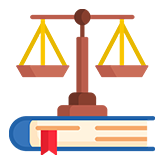Geographically, Karnataka forming a part of the tableland of the Deccan Plateau, has been often termed as an anthropological museum, where the people of different racial traits are seen. Apart from the Dravidians and Indo-Aryanraces, the land has notable strains of other categories too. The Muslim dynasties that ruled over the region attracted considerable number of Turks, Afghans and other people from the Middle-East. Proximity to Goa made many run-away Negro slaves from that regionbelieved to have come and settled down on the territory bordering Goa, especially in Uttara Kannada and these people are called Siddhis. Of late, certain settlements of the Tibetans have also come into existence. Some places on the coast like Bhatkal has people of Arabic origin and who are locally called Navayats, having settled down there for centuries. The Christian population here has a considerable strain of European element in it, as the Portuguese in Goa had married local women and considerable sections of Goan Christians have migrated to Karnataka. The contact, the coastal people had with the Arab traders helped their mingling with the local population. Moreover, various racial elements including both indigenous and foreign; various religious movements and customs have helped in evolving the Karnataka culture which has shaped the life of the people.
Demography
According to 2001 census, Karnataka with an area of 1,91,791 sq. km. has a population of 52,850,562 with 26,898,918 males and 25,951,644 females. Karnataka State ranks 9th among the 28 States and 8 Union Territories in the Indian Union both in respect of area and population as per 2001 census. Karnataka’s population constitutes 5.1% of India’s population.
According to 2011 Census, the Population of Karnataka has increased to 6,10,95,297(Males - 3,09,66,657; Females - 3,01,28,640) with a sex ratio of 968 females for every 1000 males. The Chapter III PEOPLE Population is comprised of Hindu - 83%, Muslim - 11%, Christian - 4%, Jains - 0.78% and Buddhist - 0.7percent .
Karnataka with a population of 6,10,95,297, retains the ninth rank as in 2001, in population among all the 28 States, and seven Union Territories (including the National Capital Territory of Delhi) and accounts for 5.05 per cent of Country’s population of 1,21,05,69,573 in 2011. Of the 6,10,95,297 persons enumerated in the State, 3,09,66,657 are Males and 3,01,28,640 are Females. Among the districts within the State, Bengaluru District is the most populated District with 96,21,551 persons and accounts for 15.75 per cent of the State’s total population while Kodagu District with a population share of 0.91 per cent is the least populated District.Except, Bengaluru Rural (9,90,923) and Kodagu (5,54,519) Districts, all the remaining 28 districts have population higher than one million. Of the 6,10,95,297 persons enumerated in the State, 3,74,69,335 persons reside in the Rural areas and 2,36,25,962 persons reside in Urban areas. In terms of percentage, 61.33 per cent are Rural residents and 38.67 per cent are Urban residents. In terms of urbanization, the State has witnessed an increase of 4.68 per cent in the proportion of Urban population in the last decade. Among the districts, Bengaluru is the most urbanized District with 90.94 per cent of its population residing in Urban areas followed by Dharwad District (56.82 per cent), Dakshina Kannada District (47.67 per cent), Mysuru District (41.50 per cent) and Ballari District (37.52 per cent). The least urbanized District in the State is Kodagu with 14.61 per cent, preceded by Koppal District (16.81 per cent), Mandya District (17.08 per cent), Chamarajanagar District (17.14 per cent) and Yadgiri District (18.79 per cent).
Growth of Population: As can be seen from the trends in growth of population, there was a fall in growth and a decrease during 1911-21 due to epidemics, plague and influenza. In 30 years between 1901 and 1931 the population increased only about a million and a half. The rate of growth of population has accelerated from 1951onwards. The percentage growth rate of population during 1981-91 was 21.12(Rural 17.65 and Urban 29.62) as against 26.76 during 1971-81. It reducedto 17.51% during 1991-2001 (Rural 19.07 and Urban 50.65). Among thedistricts, during 1981- 91(Bengaluru District has recorded the highest growthrate of 35.10 per cent and newly formed Udupi district (1997) has registeredthe lowest growth rate of 7.10 percent.
During the decade 2001-11, the State population witnessed a net addition of 82,44,735 persons to its 2001 population of 5,28,50,562. The Male population increased by 40,67,739 and the Female population increased by 41,76,996. Continuing the population growth trends of previous censuses, the State registered a growth rate of 15.60per cent, recording a decline of -1.91 per cent in comparison to the growth of 17.51 per cent registeredduring the 2001 Census. While the Rural population grew at the rate of 7.40 per cent, substantially less than the growth rate of 12.29 per cent registered during the decade 1991-2001, the Urban population registered a growth rate of31.54 per cent, slightly higher than the growth rate of 29.15 per cent recorded in 2001 Census. Among the districts, Bengaluru District, has witnessed the highest decennial growth rate of 47.18 per centfollowed by Yadgir, the newly created District, with 22.81 per cent. The gap in the growth rate between the first and second ranked district is a whopping 24.37 per cent. Chikkamagaluru District, a predominantly plantation area in the Malnad region, is the only District in the State which has registered a negative growth rate of -0.26 per cent. Kodagu District another plantationarea in the Malnad region with a growth rate of 1.09 per cent ranks 29, just above Chikkamagaluru District. Only 7 districts have registered decennial growth rates higher than the State average of 15.60 per cent. Of the remaining 23 districts as many as 14 districts have registered a growth rate of below 10 per cent. Rapid Industrialization and growth of various metros in Karnataka has contributed a lot towards its Population. Bengaluru, the capital city witnessed a large number of migratory populations from other parts of India. With state government providing a better health services to the people, it has further resulted in controlling the health related problems in Karnataka. So with recent modernization in the state, Karnataka has witnessed a decent growth in its Population.
Sex Ratio
The sex ratio is defined as the number of females for every 1000 males in a given area. The sex ratio of population in 2001 was 965. The rural sex ratio was 977 and that of the urban ratio was 942, as compared to the figures to that of 1991 (Rural 973 Urban 930; Total 960). The sex ratio has almost remained the same for the total population of the state with a slight decrease in the number of females whereas in the rural areas the ratio was higher and in the urban areas it was a little less during 2001.
The Sex Ratio in Karnataka has increased from 965 in 2001 to 973 in 2011. The Sex Ratio for Rural population has increased from 977 in 2001 to 979 in 2011. For the Urban population, the Sex Ratio has registered a spectacular increase of 21 per cent, from 942 to 963 in the last decade. The Sex Ratio for Scheduled Caste and Scheduled Tribe population is identical at 990 and is significantly higher than that of the State. Among the districts, the highest overall Sex Ratio of 1094 is recorded in Udupi District and the lowest of 916 is recorded in Bangalore District. However, the highest of 1094 now recorded in Udupi District is lower than 1,130 recorded in 2001 and the lowest of 916 now recorded in Bangalore District is higher than 908 recorded in 2001. Perceptible increase in Sex ratio seen in Chikkamagalur (+24), Kodagu(+23) Chamarajanagar(+22), Dharwad (+22), Mysore(+21), Davanagere (+21),Shivamogga(+20) and Chitradurga (+18). Female population is higher than male population in Chikmagalur, Kodagu, Hassan, Dakshina Kannada and Udupi. In spite of favourable Sex Ratio, it declined in Udupi (-36) and Dakshina Kannada (-2).
Density of Population: The number of persons for every square Km. area is called the density of population. The density of population in the state was 235 in 1991 as against 193 in 1981 which is less than that of the country (267 in 1991 as against 230 in 1981). Among 35 states and union territories in the country Karnataka occupies the 19th place in 2011 against 20th position in density of population in 1991 and 2001. According to 2001 census Bengaluru Urban District has registered the highestdensity of 2,985 persons per sq. km and the lowest density per sq.km. was recorded in Kodagu(134) and Uttara Kannada(132) districts. The density of population in theurban areas of Bengaluru district in 2001 was 10,375 per sq km and next comes Mysuru district which has a density of 5,508 per sq. km. in the urban areas. Apart from Bengaluru, Dakshina Kannada, Mysuru, Mandya, Dharwad, Bengaluru Rural, Belagavi, Kolar and Davangere districts have a density ofmore than 300 persons per sq. km. Those with a density between 250 and300 were Haveri, Udupi, Bidar, Hassan and Bagalkot districts; with a density between 200 and 250 were Bidar, Chitradurga, Hassan and Tumakuru. Raichur, Tumakuru, Ballari, Gadag, Mysuru and Mandya districts have an urban density of more than 5,000. The density of population of the state was 319 in2011 as against 276 in 2001. The density of population of Bengaluru metropolitan city was 4,378 in 2011 as against to 2985 in 2001. Including Bengaluru Rural district, Mysuru, Dharwad and Dakshina Kannada districts have a density of more than 400 persons per sq. km. Those with a density between 300 to 390 were Haveri, Udupi, Bidar ,Kolar, Mandya, Belagavi, Davanagere, Ramanagar and Ballari districts; with a density between 200 and 298 were Chamarajnagar, Shivamogga,Vijayapura, Yadgir, Raichur, Gadag , Kalaburagi, Koppal, Tumakuru, Hassan, Bagalkot and Chikkballapur districts. Uttar Kannada (140) and Kodagu (135) have the lowest density of population in the State.
Marital Status: According to 1990-91 census the total number of married person under the age group 15-44 in the state was 1,32,55,554 (56,59,555males, 75,95,999 females) and the percentage of these figures to the total population was 64.24% (53.75% for males and 75.05% for females). Likewise according to 2001 census the total number of married persons between 15-44age group was 2,56,43,500 (1,30,79,600 males and 1,25,63900 females) and among them 1,25(4),400 persons (19,200 males and 1,05,200 females) of between age group 15 and 44 were either divorced or got separated. According to the census reports, the number of unmarried persons is gradually decreasing from 1961 to 2001. But, the number of widows and the separated women were higher than the widowers. Likewise, among the SC and ST population, the number of married women and the widows have also increased to that of male numbers.
Urbanisation: Karnataka stood 10th in the level of urbanization in 1981 census, had 11th rank during 1991 census, among the States and Union Territories in India. The rate of urbanisation is faster in Karnataka when compared to other states of India. This trend has been growing from 1901 till 1991. In the 1991 census, there are 306 places in the State classified as towns as against 281 towns in 1981 census. The State is becoming steadily urbanised. It has a larger proportion of its population living in urban areas, than the average for the country as a whole. The district wise total number of towns as per 1991 census was as follows: Bengaluru 33; Bengaluru Rural 9;Belagavi 22; Ballari 12; Bidar 5; Vijayapura 18; Chikkamagalur 10; Chitradurga 10; Dakshina Kannada 27; Dharwad 20; Kalaburagi 19; Hassan 13; Kodagu 9; Kolar 15; Mandya 11; Mysuru 18; Raichur 13; Shivamogga 16; Tumakuru 12 and Uttara Kannada 14.
Urban Agglomeration and Cities: There were 22 Urban Agglomerations in Karnataka as per 1991 census and they were Bengaluru, Mysuru, Mangaluru, Belagavi, Kalaburagi, Davanagere, Vijayapura, Shivamogga, Tumakuru, Raichur, KGF., Bhadravathi, Hosapete, Bidar, Udupi, Hassan, Chitradurga, Gangavathi, Shahabad, Sirsi, Arasikere and Wadi. The number of towns in each class and their growth rate during the decade 1981-1991 in the State were as follows: Class I population 1,00,000 and above : 21, + 42.14, Class II- population50,000 to 99,999: 17, +47.34; Class III- population 20,000 to 49,999 : 82+28.71;Class IV-population 10,000 to 19,999 : 70, +27.27; Class V-population 5,000to 9,999 : 2.08, -5.85 and Class VI population less than 5,000 :24, +23.42 (the first figure indicates the number of towns and the second figure indicates the growth rate).
Accordingly to 2001 census 270 town in the state which included the 24 urban agglomerations viz., Bengaluru, Mysuru, Mangaluru, Karwar, Sirsi, Ankola, Kumta, Bhatkala, Belagavi, Ramadurg, Athani, Kalaburagi, Shahabad, Wadi, Harihara, Vijapura, Gangavathi, Robertsonpet (KGF), Bidar, Udupi, Hassan, Arasikere, Channarayapatna, and Chitradurga in the state. Italso included eight city corporations, 44 City Municipal Councils, 94 Town. Municipal Councils, 68 Town Panchayats, besides the Census Towns, and Notified Area Committee (N.A.C) Township. According to 2011 census there were 347 (220 Statutory (including 22 agglomerations) and 127 Census) Towns in the State. Three places viz., Kushalnagar (TP) in Kodagu district, Hanur (TP) in Chamarajanagar district and Sargur (TP) in Mysuru district were notified as Statutory Towns. Eight erstwhile Statutory Towns of 2001 Census viz., Byatarayanapura (CMC), Yelanka (CMC), Dasarahalli (CMC), Mahadevapura (CMC), Krishnarajapura (CMC), Patanagere (CMC) and Bommanahalli (CMC) and Kengeri (TMC) were merged with Bengaluru (M.Corp) to form Bruhat Bengaluru Mahanagara Palike after 2001 census. Krishnarajasagar (NAC) a Statutory Town of 2001 Census was de-notified after 2001 Census. Eighty two erstwhile Villages of 2001 Census were treated as new Census Towns for 2011 Census. The following table reveals the proportion of rural and urban populations, district wise decadal variation during 2001-2011 in Karnataka.
Rural Areas: The rural areas include all villages and areas such as forest and settlement not falling within the limits of a village. They comprise all areas not classified as Urban. A village without any inhabitants is referred to as ‘uninhabited’ or ‘bechirack’. Bechirack literally means “without any light’ ’According to 1991 census the district-wise rural population and the percentage to the total population in the districts were as follows (The first figure indicates the rural population and the second figure indicates the percentage to the total population of the district): Bengaluru 6,69,909-13,84%; Bengaluru Rural 13,69,908-81.87%; Belagavi27,41,820-76.81% ; Ballari 13,25,692-13%; Bidar 10,10,096-80.43% ; Vijayapura 22,39,244-76.48%; Chikkamagalur 8,45,422-83.11%; Chitradurga 15,91,76573.00%; Dakshina Kannada 19,31,670-71.71%; Dharwad 22,79,259 65.06%; Kalaburagii 19,72,366- 76.38%; Hassan 12,96.962-82.63%; Kodagu 4,10,51484.04%; Kolar 16,99,906-76,68%; Mandya 13,77,570-83.77%; Mysuru22,24,724- 70.29%; Raichur 18,29,765-79.21%; Shivamogga 14,03,621 73.50%;Tumakuru 19.23,656-83.43% and Uttara Kannada 9,25,744-75.86%.
The total number of inhabited villages at each census from 1901 to 1991were as follows: 1901-28,288, 1911-28,548, 1921-28,349, 1931- 28,635,1941-28,290, 1951-27,629, 1961-26,377, 1971-26,826, 1981-27,028 and1991-27,066. In 2001 there were 27,481, inhabited and 1925 uninhabited villages in the state. According to 2011 census there were 29,340 (27,397 inhabited and 1,943 uninhabited) villages in the State.
Houses, Households and Amenities: As per 2001 census there were 1,38,30,096 census houses (89,98,481 rural(85%) and 48,31,615 (34.9%) (urban) and 1,02,32,133 (66,75,173 (65.2%)rural and 35,56,960 (34.8%) urban) households in the state. Among the total census houses, 1,26,57,293 were (95,51,113 residential, 5,18,186 residential cum others, 7,79,024 shop and offices, 1,16,719 schools and colleges, 62,858hotels-lodges and guest houses,38,38 hospitals, dispensaries 1,80,891 factory, workshops and sheds, 2,07,332 worshiping places and 12,02,790 other non -residential were occupied census houses and 11,72,803 were unoccupied census houses. Among the total households (1,02,32,133) 56,13,007 are permanent,36,45,185 semi-permanent, 9,71,473 temporary and 2468 are of unclassified nature. Among the total households, 60,25,364 depend on tap, 17,50,387 on hand pumps , 8,76,001 on tube wells, 12,68,913 on wells 1,10,689 on tank and ponds, 1,11,748 on river and canals, 30,640 on springs and 54,491 on other water sources. Likewise if 13,68,797 use pit latrine, 19,07,116 use water closets, 5,61,118 use other latrines and 63,95,107 (62,5%) households have no latrine at all. Similarly if 80,37,052 (78.5%) households have electricity,21,26,345 have kerosene, 21,989 have solar energy, 5,187 have other oil, 7,047any other source as their lighting sources, 34,513 households have no lighting at all. Regarding drainage and sanitation facilities if 17,66,563 households have closed drainage and 34,75,862 have open drainage , 49,89,708 households have no drainage facilities at all.
As per the House-listing and Housing Census2011, As against 1,04,01,918 Households in 2001 Census, the State has 1,33,57,027 Households as per 2011 Census. The number of households has registered a decadal growth rate of 28.41per cent. Expectedly, Bengaluru District, with Bruhat Bengaluru Mahanagara Palike in its jurisdiction, tops the ranking with a decadal growth of 63.88 per cent in the number of Households. Kodagu District with 9.69 per cent occupies the bottom rank. Accordingly, the census houses increased from 1.38 Crore to 1.79 Crore. There is an increase of 0.30 Crore census houses for residential and partly residential purposes. The data indicates that the housing gap has reduced. There is an improvement in the construction material used for roof, wall and floor. Thus, there is a substantial improvement in the quality of housing both in rural and urban areas.
As regards amenities available with the households, 88.5% of households are using Tap, Tube well, Hand pump and Covered well as the main source of drinking water while 66.1% of these households use tap water. Only 44.5% of households have source of water within the premises while 37.3% of households have to fetch water from a source located within 500 m in rural areas/100 m in urban areas and 18.2% still fetch drinking water from a source located more than 500 m away in rural areas or 100 m in urban area.
As far as Main source of lighting is concerned, 90.6% households use electricity which shows an increase of 12% over 2001. The rural-urban gap has reduced by 8.6 percentage points from 18.3% in 2001 to 9.7%. 74.8% of the households have bathing facility within the premises, showing an increase of 15% over 2001. 60.7% of the households have drainage connectivity with 34.6% have the open drainage and 26.1% have the closed drainage. 51.2% of the households have latrine facility within premises with 36.9% households have water closet and 13.6% households have pit latrine. There is 13% decline in households having no latrine from 62% to 49% in 2011. 89.3% households have Kitchen facility with 87.6% within premises and 1.7% outside premises. 60.7% of the households are using firewood/crop residue, cow dung cake/coal etc. and 5.4% households use Kerosene. There is an increase of 14%in use of LPG from 18% in 2001 to 32% in 2011. As regards mode of communication, there is an increase of 23.1 % in television and a corresponding decline of about 23.9% in use of radios/transistors. Less than 1 out of 8 households have Computer/ laptop with only 4.8% having internet facility. The penetration of internet is 11% in urban as compared to less than 0.7% in rural area. 71.6% households have Telephone/mobile facility with 84.8% in urban and 62.6% in rural area. The penetration of mobile phone is 64.6% and landline is 15%. In the modes of transport 33.9% of the household are having bicycle, 25.6% two wheelers and 6.3% four wheelers. There is an increase of 11% in two wheeler and 3% in four wheelers, with bicycle showing increase of 3% only. 61.1% of the households are availing banking facilities with 64.4% in urban and 58.9% in rural areas. The rural urban difference has reduced from 13 to 5%. 14.3% of the household do not have any of the specified assets.
Institutional Population: The institutional population comprises persons who are not members of households. These include persons living in military installations, correctional and penal institutions, dormitories of schools and universities, religious institutions, hospitals and so forth. Persons living in hotels or boarding houses are not part of the institutional population and should be distinguished as members of one- or multi-person households, on the basis of the arrangements that they make for providing themselves with the essentials for living.
Houseless Population: The Census of India defines ‘houseless population’ as the persons who are not living in ‘census house’. A ‘census house’ is referred to a ‘structure with roof’. Census enumerators are instructed ‘ to take note of the possible place where the houseless population is likely to live such as’ on the roadside, pavements, in hume pipes, under staircases or in the open, temples, mandaps, platforms and the like’2 they are described variously as homeless, houseless, roofless, shelter less people and pavement dwellers.
Migration
Migration is one of the key factors in changing the size and structure of the population. It may be temporary or permanent. Temporary migration may be seasonal and it may be continued to certain periods in a year. Generally, people from plains move to Malnad districts both during sowing and harvesting seasons and later return to their houses. The migration of females is mainly due to marriages. Other socio-cultural factors like education and employment also contribute to the migration of the people. The number of immigrants from the neighbouring states of Karnataka has increased considerably between 1971 and 1981 and these figures are as follows: Andhra Pradesh by 62,000; Kerala by 60,000; Maharashtra by 67,000 and Tamil Nadu by 1.53 lakhs. There were 11.88 lakh persons hailing from other States in India, 21,394 persons from other Asian countries and 2,859 persons from non-Asian countries as in 1981. As per 2001 census there were 5,82,799 immigrants from Andhra Pradesh, 5,47,156 from Tamil Nadu, 3,87,507 from Maharashtra, 2,83,764 from Kerala, 79,730 from Rajasthan, 38,679 from U.P.,31,060 from West Bengal, 29,898 from Bihar, 25,375 from Gujarat ,16,840 Orissa, 7307 from Punjab, 4,664 from Jammu- Kashmir, 1,02,925 from other states and 44290 from outside the country. Likewise from Karnataka there were 12,67,421 emigrants to Maharashtra, 2,88,862 to Andhra, 1,32,882 to Goa, 1,19,993 to Tamil Nadu, 55,685 to Kerala, 28,098 to Gujarat, 16,309 to Delhi, 12,262 to Uttara Pradesh, 10,432 to Madhya Pradesh, Bihar-9077, Rajasthan – 8,294, West Bengal-5,327, Punjab – 4,042, Haryana – 3,293, Uttaranchal- 2,697, Chhattisgarh – 2,635, Jharkhand-2,274, Pondicherry – 2,023, Chandigarh, 1,830 Orissa-1,822, Jammu and Kashmir-1,452, Assam – 1,438, and 4,0671 persons other parts of the country.
Scheduled Castes and Scheduled Tribes Population: Scheduled Castes means such castes, races, or tribes or parts of groups within such castes, races or tribes as are deemed under Article 341 of the Constitution of India. Scheduled Tribes means such tribes or tribal communities as deemed so under Articles 342 of the Constitution. In 1976, the Government of India by an amendment to the Scheduled Castes and the Scheduled Tribes order published a list of Scheduled Castes and the Scheduled Tribes for the State of Karnataka. According to 2001 census there are 101 Schedule Caste and 49 Schedule Tribes in Karnataka. A vast majority of people of the Schedule Caste and the Schedule Tribes live in rural areas.
According to 2001 census there were 85,63,930 Scheduled Castes people in the State (64,17,243 in Rural and 21,46,687 in Urban) which is about 16.2%of the total population of the State and there were 34,63,986 Scheduled Tribes people (29,34,530 Rural and 5,29,456 Urban) which is about 6.6% of the total population of the State. Both the Central and the State Governments have taken up a number of welfare measures for the upliftment of Scheduled Castes and Scheduled Tribes and voluntary organisations are also functioning for the benefit of the weaker sections of the community.
The Scheduled Caste population in the State has increased from 85,63,930 in 2001 to 1,04,74,992, in 2011,registering a decennial growth rate of 22.32 per cent. The Scheduled Caste population constitutes 17.15 per cent of the total population of the State. The highest proportion of Scheduled Caste population is returned from Kolar District with 30.32 percent, followed by Chamarajanagar District with 25.42 per cent. The least proportion of Scheduled Caste population is recorded in the coastal district of Udupi (6.41 per cent) and preceded by Dakshina Kannada (7.09 per cent) District. The proportion of Scheduled Caste population is less than 10 per cent in 4 districts, between 10 to 20 percent in 13 districts and above 20 per cent in the remaining 13 districts.
The Scheduled Tribe population in the State has increased from 34,63,986 in 2001 Census to 42,48,987 in 2011, registering a decennial growth rate of 22.66 per cent. The proportion of the Scheduled Tribe population to total population of the State is 6.95 per cent. The highest proportion of Scheduled Tribe population is returned from Raichur District (19.03 per cent) and the least proportion is returned from Mandya District (1.24 per cent). The proportion of Scheduled Tribe population is less than 5 per cent in 12 districts, between 5 to 9 per cent in 7 districts and above 10 per cent in the remaining 11 districts.
Backward Classes Commissions of Karnataka: Karnataka has a very rich tradition of making reforms in uplifting welfare of the downtrodden and backward class people. In the Princely Mysore state, The Wadiyars had formed the Miller Committee long back in 1918 itself, when Nalwadi Krishnaraja Wadiyar was then the Ruler of Mysore Kingdom.
Economic Criterion: Justice Reddy has then subjected his assessment of the castes/communities in these lists to the economic criterion. The pattern which has emerged from his earlier analysis of the data on the 1988 SSLC examination for the State as a whole is that children of the lowest income group fared hardly while those of the highest income group fared best, and that the performance was distinctly linked to income, improving as the income level went up. As this it-self is enough evidence of the crucial role of economic background and the importance of the economic criterion in locating social and educational backwardness, his main task has been to consider the extent of relevance of this criterion. On this, he has first offered two very powerful arguments. First, if economic criterion is to be the sole test and if socially and Educationally Backward Classes are to be equated with the economically backward, the Constitution would have used the expression ‘economically backward; and not the expression ‘socially and educationally backward”1. Second, Article 15(4) is obviously not part of a poverty eradication programme though poverty eradication may also necessarily be involved in any socio-educational programme aimed at the removal of backwardness. By numerous illustrations he has then exposed the ‘hollowness‘, the’ impracticability’, and the ‘ undesirability’ of adopting an income criterion as the sole basis; more so because of the difficulty in ascertaining the actual income, the arbitrariness involved in fixing and computing such income, and the greatest possible abuse of the income certificates. As the economic factor is closely linked to the caste factor and the caste factor has greater links with social backwardness, Justice Reddy has been only too right in suggesting that with some caution and care the Socially and Educationally Backward Classes may be identified with reference to a combination of the caste and economic factors, without necessarily recognising the economic factor through income certificates. This is precisely what he has already done in his consideration of the various factors under caste backwardness.
However, by arguing that the occupational factor is closely linked with the caste and economic factors, and as a further measure of caution, he has again looked at the representation of the different castes/communities in the public service, this time by treating women as a separate category within each caste/ community for the state civil services for which he could obtain the relevant data. He has also introduced the economic factor for restricting the reservation benefits to the really backward by excluding from benefits persons who are seemingly forward as revealed by their parents’ educational, occupational, and economic background. As this issue is part of his recommendations, more of this later.
After all his systematic, stage by stage, disaggregated and aggregated analysis of the latent and manifest evidences of social and educational advancement or backwardness, Justice Reddy has confirmed the two provisional lists prepared by him. He has divided the list of the backwards into three categories, with 52 names in category 1, 14 names in category 2, and numberless occupational groups as category 3. The division into categories 1 and 2 is on the basis of the comparative backwardness of the castes/communities as well as their size, bearing in mind that “some of them are either so extremely backward socially and educationally (or) are so small in number that they cannot possibly hope to compete with the larger groups or those who though socially and educationally backward, are more advanced than themselves”. Incidentally, the first two categories also include 34 of the 35 castes/communities identified as backward by the Venkataswamy Commission.
Keeping in mind the uniform and consistent patterns which have emerged from the data on various factors of social and educational backwardness, Justice Reddy has treated the three categories as common for purposes of Articles 15(4), and 16(4). The overall reservation recommended by him is 38 per cent (11 per cent more than Venkataswamy Commission’s recommendation) - 5 per cent for category One, 28 percent for category II and 5 per cent for category III consisting of landless or land-poor agricultural labourers, handloom weavers not owning more than two looms and working for wages or on piece rate basis, construction workers, and so on. The population coming under the first two categories is about 8 per cent and 33 per cent respectively (including the Lingayat Subgroups).
Recommendations: Justice Reddy has made several important recommendations for the effective implementation of the reservation policy, and for the betterment of the really backward. They include: -
Disabled Population: The census of disabled population was discontinued since 1941 and however it has been continued during 1981, the International Year of the Disabled. The data on crippled has been collected during 1981 for the first time in the history of Indian Census. According to 1981 census, the disabled population in the State is (the first figure in the bracket indicates for Rural areas and the second figure in the bracket is of the Urban areas) Dumb (14,970; 2,643); Blind (15,162; 2,944) and crippled (15,208; 3,803). Fora population of 10,000 there were six totally blind, six totally crippled and six totally dumb persons in rural areas and the corresponding figures for the urban areas were three, four and three respectively. Incidence of disabilities is greater in rural areas than in urban areas and this might be due to the lack of public health services, sanitation, personal hygiene, cleanliness, food and nutrition. The Central and the State governments and many voluntary organisations have come forward with various kinds of programmes for the rehabilitation, of the disabled (See chapter XII - Social Welfare Measures for more details). According to 2001 census, among the total disabled population of 9,40,643, 4,40,875 were blind, 90,717 dump, 48,861 deaf ,2,66,551 crippled and 92,631 mental disorder persons.
Literacy: A person is treated as a literate if he can read and write with understanding in any language. For this no minimum educational standard or formal education is required. All children of the age group 0-6 are treated as illiterate. The State is witnessing constant increase in the Effective Literacy Rate (The effective Literacy rate has been defined as the percentage of total number of literates among the population aged 7 years and above.) over the past decades. In continuation of the trend witnessed during the previous decades the Literacy Rate of the State has increased from 66.64 per cent in 2001 to 75.36 per cent 2011. While the Male Literacy has increased from 76.10 per cent to 82.47 per cent, the Female Literacy rate has increased from 56.87 per cent to 68.08 per cent. The increase in the Female Literacy rate by 11.21 percentage points against the Male Literacy rate increase of 6.37 percentage points has substantially narrowed the gap between Male – Female Literacy rates. Among the districts, Dakshina Kannada District with overall Literacy rate of 88.57 per cent retains its top position, closely followed by Bengaluru District (87.67 per cent) and Udupi District (86.24 per cent). The lowest overall Literacy rate of 51.83 per cent is recorded in the newly created Yadgir District, preceded by Raichur District which has recorded 59.56 per cent. Apart from these two districts, all the remaining 28 districts have registered more than 60 per cent Literacy rates.
Languages: As many as 22 languages are recognised in our Constitution as the main languages of the country. Though, Kannada is the principal language of the state, and accounting for more than 65% of the total population (according to 1981census) were using Kannada, there are people who speak other major languages also. According to 1981 census the number of persons speaking some major languages in the State was as follows: Assamese 157; Bengali 10,226; Gujarati 36,390; Hindi 6,57,561; Kannada 2,41,99,576; Kashmiri 94; Konkani 6,40,738; Malayalam 5,90,709; Marathi 13,91,311; Oriya 2,118; Punjabi 9,536; Sanskrit 509; Sindhi 11,597; Tamil 13,85,313; Telugu 29,93,501; Tulu 12,17,834 and Urdu 35,12,831. According to 1991 census, 66.22% of the population of the state were speaking Kannada, Urdu 9.96% Telugu 7.3%, Tamil 3.84%, Marathi 3.65, Tulu 3.07%, Hindi 1.97%, Malayalam 1.68%, Konkani 1.75%, Kodava 0.21%.Table given below shows the percentage of population by Mother tongue along with district wise statistics in Karnataka.
Religion: Karnataka is a land of many religions. Every religion has contributed in its own way in shaping the life and activities of the people and promoting the culture of Karnataka. Majority of people in Karnataka are adherent to Hinduism and the other major religions of the State are Buddhism, Christianity, Jainism, Islam and Sikhism. According to 1991 census the population and the percentage of the total population of different religions and religions not stated were as follows (the first figure in the bracket indicates the population and the second figure is the percentage of the total population Buddhists (73,012 - 0.16), Christians,(8,59,478 - 1.91), Hindus (3,84,32,027 - 85.45), Jains (3,26,114 - 0.73),Muslims (52,34,023 - 11.64), Sikhs (10,101 - 0.02),other religions and persuasions (6,325 -0.01) and religion not stated (36,121– 0.08).According to 2001 census the population and the percentage of the total population of different religions are as follows (the first figure indicates the population and the second figure is the percentage of the total population) Buddhists 3,93,300,(0.74);Christians 10,09,164 (1.90);Hindus 44321279,(83.86); Jains 4,12,659,(0.78);Muslims 6463127,(12.23), Sikhs 15,326(0.02);Others 1,15,460,(0.22);Religion not stated 1,20,247, (0.23). According to 2011 census, the provisional figures for the religion wise distribution of Population in Karnataka was comprised of Hindu - 83%, Muslim - 11%, Christian - 4%, Jains - 0.78% and Buddhist - 0.73% respectively.
Hinduism: Hinduism comprises of several sects and faiths. The Hindu Code denotes all persons who profess Hindu religion either by birth by Hindu parents or by conversion. All Indians who are not Muslims, Christians, Parsees or Jews, can be termed as Hindus. Hinduism according to Hindu Law includes followers of Vedic tradition, Sikhs, Jains, Buddhists, Veerashaivas, Arya Samajists, Bramhos and the followers of animistic cults including Bhutaworship etc. There are a number of cults and religious practices, among Hindus. Gokarna is an important Shaiva centre of great antiquity. Pranaveshwara Temple at Talagunda is one of the oldest among the Shiva shrines of India. Shankaracharya (circa 788-820) visited Karnataka and the Sringeri Peetha is one of the four mathas believed to have been founded by him in India. He preached the doctrine of Monism or Advaitha, according to which Brahma or the Supreme Being alone is real and the universe is illusory or Maya. He advised people to worship any of the six deities, Shiva, Vishnu, Shakti, Kartikeya, Ganapathi or Surya. In addition to Sringeri, Shankara Mathas were also founded later at Kudali, Shivaganga, Avani and Sankeshwara in Karnataka. Many groups of Brahmanas like the Badaganadu, Mulukanadu, Babburkamme, Kota, Karade, Hoysala Karnataka, Uluchukamme, and Chitpavan are adherents of the school of Shankara in Karnataka.
Buddhism: One of the ancient religions founded and propagated by Gautama Buddha in India during 6th century B.C. Later it spread to other parts of the world. The four truths preached by Buddha is popularly known as ‘Arya Satya’ or the ‘Noble Truth’. Buddhism was popular in Karnataka from the time of Ashoka (273- 232 B.C.). It is believed that Ashoka had sent Buddhist missionaries to Banavasi. Hiuen- Tsiang who visitedKarnataka in about 640 A.D. says that Banavasi country had hundreds of Viharas. At Sannati and Kanaganahalli (Kalaburagi district), remains of Stupas of Shatavahana times have been unearthed. There are Buddist monuments of Chalukyan times at Badami and Aihole in Vijayapura district. Tharabhagavati images have been found at Belgavi (Balligave, Shivamogga Dt.) and Koliwada (Dharwad Dt). Many Buddhist remains were unearthed in and around Hampi. Some of the centres of Buddhist worship as in Kadiri later were converted into centres of Shaiva worship and Manjushri at Dharmastala became Manjunatha. They came under the influence of the Natha Panthis. There are wonderful 10th Century bronze images at Kadri which include Lokeshwara. There is a Mahabodi Society at Bengaluru active both in social and spiritual activities.
Jainism: ‘Jina’ to mean the ‘conqueror’ i.e., one who has conquered the materialistic life, love and Jealousy and freed from the clutches of this mundane word. The terms like ‘Arhat’, Tirthankara etc., are the synonyms for the word ‘Jina’. The philosophy taught by these Tirtharkaras itself is Jainism. Altogether 24 Tirtankaras staring from Vrashabhanatha to Mahavira have enriched Janism through their preaching’s. Jainism has been an important religion of Karnataka and ithas contributed quite substantially to the culture of Karnataka. Bhadrabahu, the last Shrutakevalin, migrated to Karnataka with a large number of followers including a Maurya prince and spent his last years at Shravanabelgola. Banavasi Kadambas built Jaina basti at Halsi, the ancient Palashika in Belagavi dt. The Gangas highly patronised Jainism and famous Gomata monolith at Shravanabelagola was erected (Circa 982) by Chavundaraya noted scholar and Ganga general. But even before that, about a 10 ft. tall Gommata sculpture was erected at Aretippur in Maddur taluk as early as 918 A.D. Besides Bastis were built at Shravanabelgola, Manneand Kambadahalli during the Ganga rule. There were Jaina scholars like Pujyapada (Devanandi) and Kundakunda in the Ganga court and Kannada authors Nemichandra and Chavundaraya were also Jains.
The Kadambas, the Rashtrakutas and Chalukyas of Kalyana were the great patrons of Jainism. Great Mathematician Mahavira, the earliest Kannada poets like Srivijaya, Pampa, Ponna and Ranna of Jaina affiliation. Gommata monoliths were erected at Gommatagiri in Hunsur Taluk (Mysuru district), at Karkala in Udupidt. (1432), at Venuru (1603) and recently at Dharmasthala (1982) in DakshinaKannada District. The Jains in Karnataka are mostly followers of the Digambara sect and Swetamabaras came in recent years from Gujarat and Rajasthan mainly for trade and are found mostly in commercial and urban towns.
Veerashaivism: Veerashaivism is a full blown offshoot of earlier Shaivism. Five Acharyas had earlier taught this cult. It was popularised by Basava (circa 1131-1167), the treasurer of Kalachuri Bijjala of Kalyana. Basava and his contemporaries preached their religion in Kannada. The Veerashaiva teachers preached through Vachanas (poetic-prose) and they propagated the worship of Shiva and the leading of a life of morality and condemned social evils like caste differences and untouchability. Basava stressed the dignity of labourby his statement ‘Kayakave Kailasa’ (‘worship through work’) and wanted every Veerashaiva to follow some useful profession to earn his rightful livelihood. Jedara Dasimayya, Jagajyoti Basaveshwara and Ekantada Ramayya, two saints who had preceded Basava and contemporaries of Basava like Allama Prabhu, Channabasava, Siddarama, Madivala Machayya (a dhobi), Kakkayya (a cobbler), Hadapada Appanna (a barber) and women like Akka Mahadevi, Akka Nagamma, Neelambika Muktayakka and others were among those who composed Vachanas and propounded this philosophy. The Veerashaivas are a major section and are recognised by the Ishtalinga which they wear on their body. The practice of ‘dasoha’ led to the starting of free hostels by the Veerashaiva Mathas and in the long run to educational institutions. The Veerashaivas are rendering yeoman service in the field of education in the state.
Natha Pantha, believed to be a blend of Mahayana Buddhism and Shaivism, was also popular in Karnataka. Natha Pantha Mathas are found in many parts beginning from Handi Badaganath in Belagavi District to Kadri and Vittala in Dakshina Kannada, Adichunchangiri in Nagamangala taluk of Mandya district was once a centre of this cult. Dattatreya worship (influenced by the Natha Pantha) is a popular cult in Karnataka. Narasimha Saraswathi (1378-1455) believed to be an ‘avatara’ of Dattatreya had visited Bidar and is described to have cured Bahamani Sultan Allaudin of some serious sickness. Devara Ganagapur in Kalaburagi district, Kurugadda in Raichur District and Baba Budangiri in Chikkamagalur district are a few notable centres of Dattatreya worship in Karnataka. Another form of Shaivism that was and is popular in Karnataka is the worship of Mailara and his consort Malachi (Malavva). Centres of this worship are found at Adi and Mangsuli in Bidar district, Mailara in Ballari district, Guddadaguddapur in Haveri district and Bellur in Mandya District are the other important centres of this sect. Promoters of this cult, wearing red robes and a cap made of bearskin are found even today and are called Goravas or Vaggayyas.
Vaishnavism: It is another old religion in Karnataka. Some of the early Ganga rulers were also Vaishnavas. Ramanuja (1017-1137) who was born at Sriperumbudur in Tamil Nadu, came to Karnataka during the beginning of the twelfth century. His parents were Bhumi Piratti (Kantimati) and Keshava Perumala. Ramanuja taughtqualified monism or Vishishtadwaitha. Vishnu is the Supreme Deity, accompanied by his consort Lakshmi and she represents divine grace. Lakshmi is the, mediator between God and men. That is why this religion is called Srivaishnavism. Ramanuja tried to preach to all in the society and even admitted the ‘untouchables’. Into the temples on specified days in a year. Many fine Vaishanava temples including the one at Belur in the Hoysalas style were constructed during this time. Melkote has the famous Cheluvarayaswamy temple and Mysuru City has the famous Parakala matha of this cult. After Ramanuja, came Acharya Madhwa (1238-1317) who was born at Pajaka near Udupi. He preached the philosophy of Dualism or Dwaita and worship of Vishnu, who is the Supreme according to him. The teachings of both Ramanuja and Madhwa, who propounded Bhakti (devotion) gave an impetus to the Bhakti Movement of North India. He started eight Mathas to conduct the worship of the Lord Krishna in turns. Uttaradi Matha at Hosapete and Raghavendra Brindavana at Mantralaya in Andhra are other noted centres of this sect.
Sikhism: The term ‘Sikh’ denotes ‘disciple’. This religion founded by Guru Nanak had witnessed 10 preachers up to Guru Govind Singh. As they pronounced that, the Guruparamara (tradition) ends with them, henceforth, they should consider their ‘Adigrantha’ as Guru, the sacred work “Grantha Saheb” is kept and worshipped in their Gurudwaras. This sacred work has the preaching of Guru Nanak in the first part; preaching of the remaining nine Gurus in the second part, followed by messages and Kirtanas of the sages also. ‘Khalsa’ is the new sect initiated by Guru Govinda Singh, to mean ‘sacred’. Accordingly those who took the oath as Khalsa, should wear the five ‘Ka’s’ viz., Kesh-Kacha-Kar-Kanga and Kirpan, and suffix their names as Singh. Sikhism also has left its imprint on Karnataka. Guru Nanak is believed to have visited Bidar and there is Guru Nanak Jhira Sahib in his memory. One of the close disciples (Panch Piyares) of Guru Govind, Bhal Sahib Chand (later known as Sahib Singh), a barber, was from Bidar and he was among the five who were initiated to the Khalsa. Considerable number of Sikhs took service under Hyder and Tipu and many have come and settled down in the cities of Karnataka in recent decades. There are Gurudwaras at Bengaluru, Kalaburagi and Hubballi.
Folk Religion
Although Folk Religion is a part of Hinduism still, it deserves an independent study due to its special features. The unique philosophical aspects of folk religion may thus be summed up as follows. If a disciplined and classical religion, is generally propounded by an individual, folk religion is formed and developed out of the logistic thinking of a group of people since early times. While the principle of the former are textual, latter’s are of oral tradition, practiced and followed by the people under the guidance of the elders of clan over several generations. If more features of the former religion is one and the same irrespective of time, space and related communities, in case of folk religion they differ according to the time, space and communities respectively if the former ones are monotheistic in outlook, folk religion has accepted polytheism. Generally, if things like rock, trees, water, land wind sky, animals, birds, etc., found in the environ formed the basis for folk religion, as they strongly believe that they have superhuman power in them, whether these power which is good or evil if pacified by worship and offering sacrifices, will certainly bring good to there. It is because of this only nature worship has evolved among them. The Worshipping of family deity, tutelary deity, village deity, Masti, Bhutaradhane, etc., magic, witchcraft, tantric and such other beliefs and practices are the salient features instrumental in framing the folk religion. Apart from these, principles and traditions of the classical religion have also blended amicably in the life of common folks.
Shakti Worship: The worship of Shakti or the Mother Deity is found in various forms in different parts of the state. Most of the villages have village deities who are believed to protect the villages. The epidemics like cholera, small pox, plague etc. are believed to be caused by the anger of the Mother Deities. These deities are also called Gramadevatas under different names like Maramma, Malagamma, Yellamma, Renukamma, Durgamma, Dyamawwa and Kalikadevi in different parts of the state. A village deity is often represented by an image, a shapeless stone or some other symbol and in many places, she has shrines built in her honour. There can be wooden images also, some of them gaily painted. Blood sacrifice was also offered to these deities. Yellamma at Saudatti, Kolaramma at Kolar, Banashankaramma at Banashankari, Marikamba at Sirsi, Mayavva at Chincholi (Belagavi district) and Chandralamba at Sannati are some notable centres of such worship. The Jatra of Madduramma at Huskur near Bengaluru is attended by scores of thousands.
Islam: Islam entered Karnataka soon after its propagation in Arabia as Arabs were trading at the ports of Karnataka. Some of the Arabs had settled on the West Coast and inscriptions speak of them as Tajjikas. As testified by Sanjan Plates, the Rashtrakutas had a Tajjika Governor and Arab travellers also speak of Muslim settlement in the major commercial centres of Rashtrakuta Empire. Their guild called Hanjamana (Anjuman) is mentioned in the records of the Kadambas of Goa, Alupas of Dakshina Kannada and of Vijayanagara. The Navayats and the Mapilles (Moplas) are the Muslims from Karnataka Coast, who follow the Shafi sect like the Arabs.
The Afghan, Turks, Persians etc. are called Dakhni Muslims, who speak Urdu and belong to Hanafi sect. Islam introduced the Persian and the Arabic languages into Karnataka and DakhniUrdu also developed in the South. Fine Indo-Sarsenic monuments at Kalaburagii, Bidar, Vijapura, Shahpur, Sagara, Gogi, Ashttur, Sira and Srirangapatna have the pride of place in the history of Islamic art of Karnataka. The Sufi sect is also popular in Karnataka and the tomb of Bande Nawaz Gesu Daravazat Kalaburagi is highly venerated by all. The Sufi saints received royal patronage from Bahmani Rulers and they were active at Kalaburagi, Bidar and Vijayapura. The Muslims introduced coffee, paper and agarbatti industry into Karnataka. Tipu introduced sericulture.
Sufi Cult: A person, who belongs to people, a Muslim Saint Etc., are some of the meanings given to the word ‘Sufi’. The Sufis preaches to the devotees in matters of praising the God, developing intimacy between God and the devotee, and ultimately becoming one with the Almighty. Sufi sect was introduced in India by Khawaja Moinuddin Chishti of Ajmer. It is said that the Sufis worked to develop harmonious relationship between Hindus and Muslims.
Christianity: With the advent of the Portuguese, Catholic Christians entered Karnataka. Portuguese founded factories at Mangaluru, Kundapura and Honnavar where they also tried to secure converts to their religion in the days of Vijayanagara. Inquisition, epidemic and famines forced many Catholic Christians to leave Goa and enter Karnataka. Keladi rulers encouraged their migration as the Christians had acquired new techniques in agriculture and animal husbandry. Keladi Channamma granted a site to them to build a church at Mangaluru. During the beginning of the 19th century, Protestant missionaries like the Basel Mission, the London Mission and the Wesleyan Mission entered Karnataka. The London Mission was first founded at Ballari in 1810 and from there they came to Bengaluru in 1820. The Wesleyans started their activities in princely Mysuru from 1821 and the Basel Mission started its activity in Mangaluru in 1834 and later spread to other places like Dharwad, Hubballi, Haveri and Gadag. The Basel Mission started the first Kannada newspaper, ‘Mangaluru Samachara’ in1843 and printed Kannada classics which were found written on palm leaves. Both Catholics and Protestants popularised English education in Karnataka by opening schools at Mangaluru, Madikeri, Bengaluru, Ballari, Dharwad and Belagavi. They also took up service in the field of healing and ran many hospitals.
Parsi Religion: It is a sect that follows the rites and rituals of Zoroastrianism. They immigrated to India as a result of aggressive Islamic approach from Persia. Gradually they have reached Bengaluru also via Gujarat. They are fire worshippers and believe ‘fire’ as the representation of God’s light or wisdom. They never bury or cremate the dead; instead they keep them atop a high tower. They have their worshiping place at Shivaji Nagar and the Tower of Peace (Shanti Gopura) reserved for disposal of the dead is located on the Hebbal Road in Bengaluru.
Bhakti Movement: The term ‘Bhakti’ is derivative of from the Sanskrit word, ‘Bhaj,’ to mean to do service, to get in etc., one who executes his daily duties as a part of service of Almighty will be considerable as ‘Bhakta’ - a devotee. Bhagavad Githa, Bhagavatha, Bhaktisutras, the teachings of religious preachers, the compositions of saints and Dasas, folk invocation songs are some of the forms which are inspired and developed by the ‘Bhakti’ movement. In other words Bhakti movement was also one of the main causes for the origin of some of the folk performing arts like patakunita, kamsale etc., There are numerous of poets and artists who served for the Bhakti movement with their writings and performances. Dasa Pantha is a bye-product of Bhakti cult.
Modern Religious Movements
The modern religious movements like Brahma Samaj, Arya Samaj, Theosophical Society, Ramakrishna Mission, Chinmaya Mission and Prajapitha Brahma Kumari Ishwariya Vishwavidyalaya have influenced the life of Karnataka by starting their activities in the State. The Theosophical Society started functioning in the State in 1886 with its first unit at Bengaluru City followed by Bengaluru Cantonment unit in the same year and subsequently started its branches in various places like Mangaluru (1901) and Dharwad (1902). The Ramakrishna Mission was first started at Bengaluru in 1904 followed by one at Mysuru in 1927. Swami Vivekananda had visited Belagavi and Mysuru in 1892 and the then Mysuru ruler Chamaraja Wadiyar extended financial help to Swami Vivekananda for his journey to Chicago. A trusted follower of Swami Vivekananda, Alasinga Perumal (1865-1909) was from Chikkamagalur and he founded the journal ‘Brahmavadin’ from Madras at the Swami’s instance.
Brahma Samaj opened its first branch in Karnataka at Bengaluru in 1866 followed by branches at Mangaluru and Mysuru. Kudmul Ranga Rao, who started Depressed Classes Mission at Mangaluru in 1897 was influenced by Brahma Samaj. Sir Narayan Chandavarkar of the Prarthana Samaj hailed from Honnavar in Uttara Kannada.
Arya Samaj started functioning in Mysuru State by early 1880s and a branch was opened at Mangaluru in 1919 and at Bengaluru in 1922. The modern religious movements have not only played an important role in social reforms such as work against untouchability and emancipation of women but also in promotion of moral education. Men like Sir Sheshadri Iyer, the Dewan of Mysuru were influenced by these movements and enacted laws aimed at social reform.
Festivals and Fairs
The Hindus have several religious holy days, occasions of festivals and fasts throughout the year. Some of the important festivals for Hindus are: New Year Day or Ugadi (the first day of Chaitra month); Ramanavami (the birthday of Lord Rama, the ninth day of Chaitra); Basava Jayanthi the birth day of Basaweshwara (Akshayatritiya); Shankara Jayanthi the birthday of Acharya Shankara (Vaishaka Shuddha Panchami); Kara Hunnime (fullmoon day of Jyestha, a festival for peasants); Ashadha Ekadashi (the eleventh day of the bright half of Ashadha); Bheemana Amavasya (New Moon day of Ashadha); Nagapanchami the festival of Serpent God (on the fifth day of Shravana); Gokulashtami, the birth day of Lord Krishna (the eighth day of the dark fortnight of Shravana); Ganesh Chaturthi (fourth day of the bright half of Bhadrapada when God Ganesh is worshiped); Navarathri or Dasara (first ten days of Ashweeja Masa); Deepavali (thirteenth day of dark half of Ashvija) and the festival of light and day to worship Goddess of Wealth Lakshmi (lasts for five days); Bhogi and Makara Sankranthi (on the 13th and 14th January, respectively); Mahashivarathri 13th or the 14th day of the dark fortnight of Magha, a festival in honour of God Shiva; and Holi or Kamana Habba, marking the death of Kama (God of Love) on the full moon day of Phalguna, marked inplaces with much noise and gay abandon. In many places, Navarathri is also celebrated as Nada Habba (State festival) and in Mysuru, on Vijayadashami day (the victorious tenth day), the statue of Goddess Chamundeshwari is taken in a colourful procession to Bannimantap with all pomp and pageantry, consisting of tableaux of historical episodes, infantry, mounted horses, Bharat Scouts and Girl Guides, NCC., Bharat Seva Dal etc. Rama Navami and Ganesh Chaturthi are marked by public celebrations accompanied by speeches, dance and music recitals. Kodavas have three important festivals like Koil Muhurta, Cauvery Sankramana and Huthri (harvest festival).
The chief Muslim festivals are Id-ul-fitar or breaking the fast, which marks the conclusion of Ramazan; Idul-ul-Zuha or Bakrid which is held on the ninthday of the month called Zil-hajah and the Shab-e-Barat which is celebrated during the evening of the fifteenth day of the month of Shaban. Moharram is celebrated publicly in many places by honouring symbols called tabuts.
The Christians observe the New Year day, Good Friday, Ascension Day. Feast of St. Joseph, Easter Sunday (the Day of Resurrection), birth day of Mary, Christmas (the birth day of Christ), Thanks Giving Day, Harvest festival and church anniversary. The Jains celebrate most of the Hindu festivals in their own way and according to their own tradition and they give importance for fasting, praying and hearing the recitation of the religious texts. Some of the important festivals observed by them are Chaitra Pratipad (Ugadi) to commemorate the victorious Digvijaya of Bharata, son of Teerthankara Adinatha(Vrishabhadeva); Mahaveera Jayanthi (Chaitra Shukla Trayodashi); Dasara (Vijayadashami) is believed to be the date when Adinatha attained Kevala Jnana or enlightment and the date when his son Bharata secured his disc or Chakraratna); Deepavali (celebrated as the date of Mahanirvana of Mahaveera and they worship Lakshmi and Jnana Lakshmi) and Shivaratri (celebrated as Jinaratri as Adinatha is believed to have attained salvation on the dark 14th of Magha). The Sikhs observe Guru Nanak’s birth day of Karteeka Pournima and Gurudwara inauguration day at Nanak Jhira, Bidar with enthusiasm and pomp with ‘akhand pathan’ of Guru Granth Sahib. Kirtan and Satsang attract, a large number of Sikhs from many places.
Jatras
Every year, the Jatras (fairs) are held in honour of village deities (grama devathas) generally after the harvest takes place. In Hindu temples, Muslim dargahs, and Jain bastis and in other holy places of worship people celebrate annual festivals. Men, women, people of rural and urban areas take part in these jatras with full enthusiasm without discrimination of caste, creed and religion. Itinerary merchants open their stalls to sell toys, sweets, sarees, vessels, bangles and other items during these jatras. Cattle fairs are also held in many places during the jatras and these are the centres of large trade and commerce. Jatras promote social and religious harmony among various sections of the society. The following table gives the important Fairs regularly held in Karnataka.
Source: A Handbook of Karnataka, 2015
Department of Gazetteer, Government of Karnataka
Last Updated : 09-09-2021 02:31 PM Aprover: Admin
 Govt Contact Manual
Govt Contact Manual
 Important Websites
Important Websites
 e-Governance Websites
e-Governance Websites
 e-Service Websites
e-Service Websites
 Statistics Websites
Statistics Websites
 Central Govt Websites
Central Govt Websites
 Technical Websites
Technical Websites
 Kannada websites
Kannada websites
 Commission
Commission
 Law/Court
Law/Court
 Downloads
Downloads
 Tourist Websites
Tourist Websites
 Government Holidays
Government Holidays